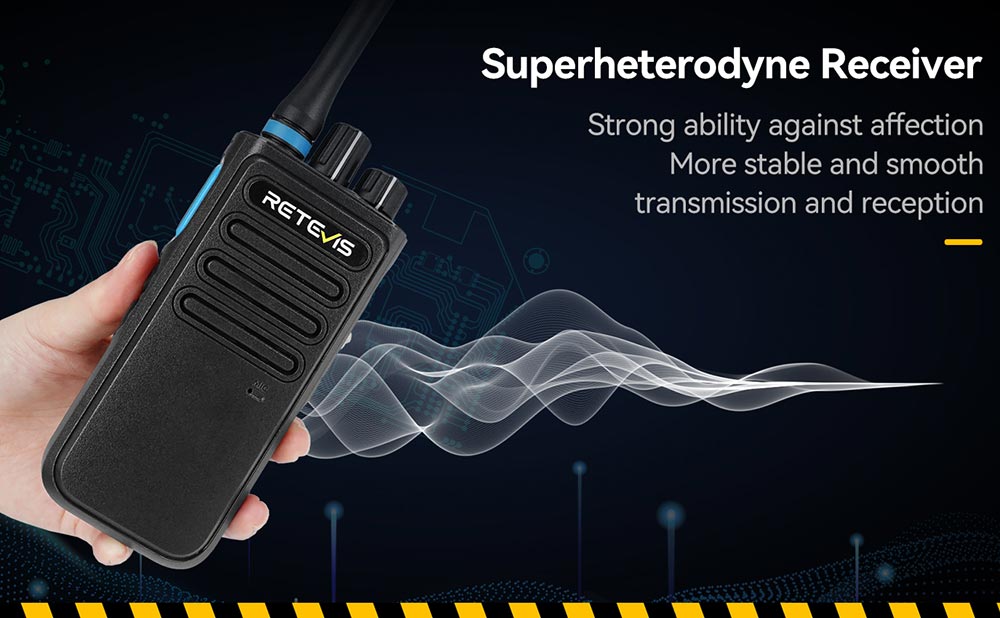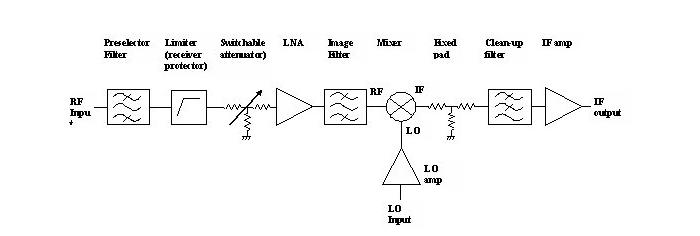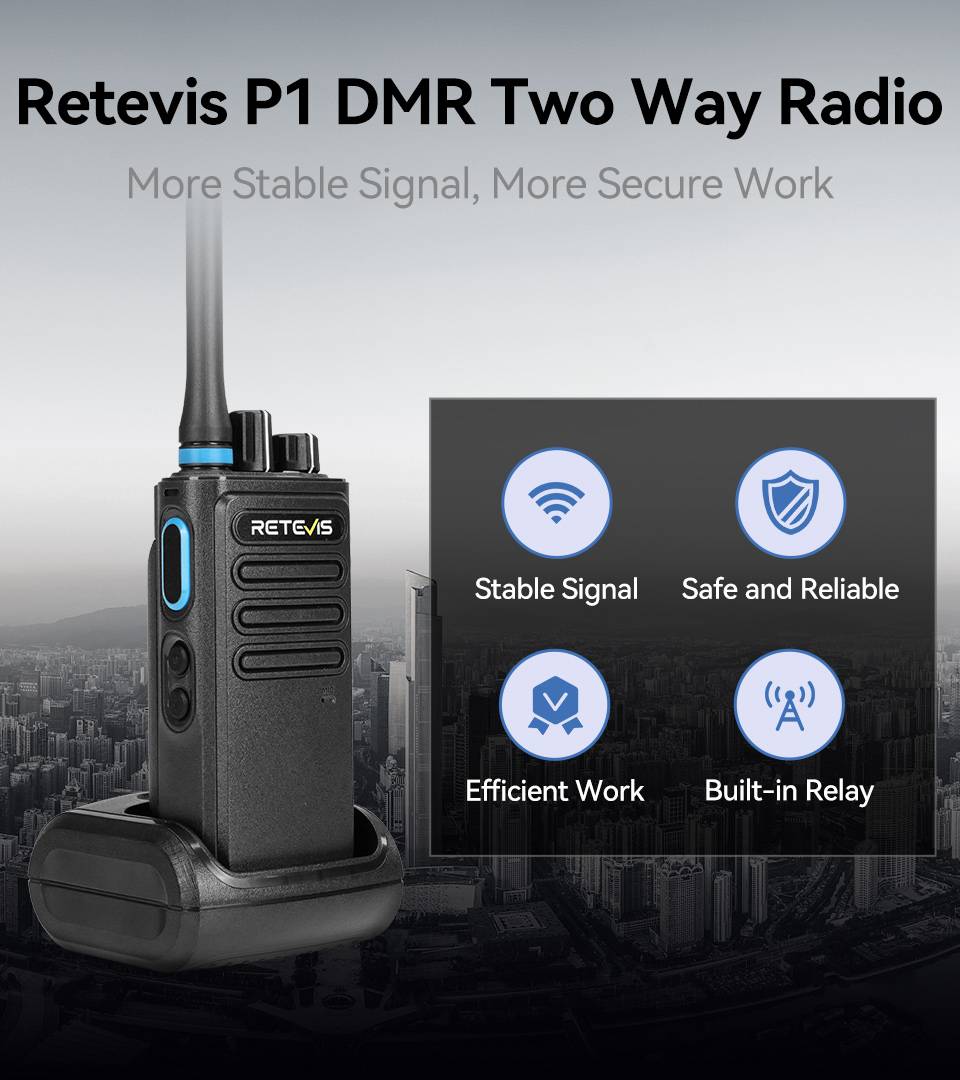Superheterodyne Receiver for Retevis P1 UHF DMR Radio

Superheterodyne Receiver for Retevis P1 UHF DMR Radio
Retevis P1 is a new two-way radio with superheterodyne receiver. superheterodyne technology allows him to get a longer communication range and more stable communication signal. Let's learn together what is superhet radio today.
What is a super-heterodyne receiver?
A super-heterodyne receiver (or superhet receiver) is a type of radio receiver that combines a locally generated frequency with a carrier frequency to produce a low-frequency signal that is easier to demodulate than the original modulated carrier.
The term "heterodyne" refers to the combination of two different signals, as opposed to a direct conversion or zero-difference receiver that uses a local oscillator frequency equal to the frequency of the received signal.
How does it work?

A super-heterodyne receiver works by mixing a radio frequency (RF) signal with a local oscillator (LO) signal to create an intermediate frequency (IF), which is then demodulated.
The LO frequency deviates from the RF carrier frequency, creating a signal mirror image. Using a bandpass filter, the IF signal will pass and all other images will be rejected. In modern receivers, the IF signal is converted to a digital signal and then demodulated in the digital domain.
Advantages of superhet receivers
1. Good Sensitivity: A clear advantage is the good level of sensitivity that can be achieved with the super-external differential format compared to some other forms of radio receiver. Although other formats today offer the same level of sensitivity, in the early days of wireless communications, super-aberrations were far ahead of other formats such as TRF.
2. Ability to receive VHF signals: The fact that the super-exception receiver uses frequency mixing technology means that most of the receiver's processing is done at lower frequencies, making it capable of receiving very high frequency signals.
3. Good adjacent channel selectivity: One of the main advantages of an EE receiver is the proximity or adjacent channel selectivity it provides. Using fixed frequency filters, it provides excellent adjacent channel rejection.
Overall, the advantages of the super-external differential receiver are many. Its flexibility and functionality means that it has many uses, including broadcast reception, as a test receiver for EMI/EMC testing, two-way radio communications, reception for scientific applications, reception of satellite signals, and more. It is also because of its many benefits that the EE receiver remains one of the most important technologies in radio technology.
Retevis superheterodyne radio receiver for sale

Retevis P1 high-power long-distance walkie-talkie with superhet receiver, single-frequency relay, offering a wide communication range.AES256 compatible with Motor's method, ensuring reliable and secure communication during work. A total of 250 channels provide you with more choices.
The P1 is a bi-directional analog mode and digital mode radio. Therefore the P1 will work with both analog mode radios and DMR mode radios.The Retevis P1 supports encryption. Enhanced encryption with ARC4/AES128/AES256, these are compatible with Motorola radios. Provides better business benefits, avoids unwanted conversations and protects communication security.
The higher the power, the farther the radio can communicate.The Retevis P1 is not only a high power radio, it is also a DMR radio. Compared to analog radios, the communication time will be longer and the sound will be clearer.






